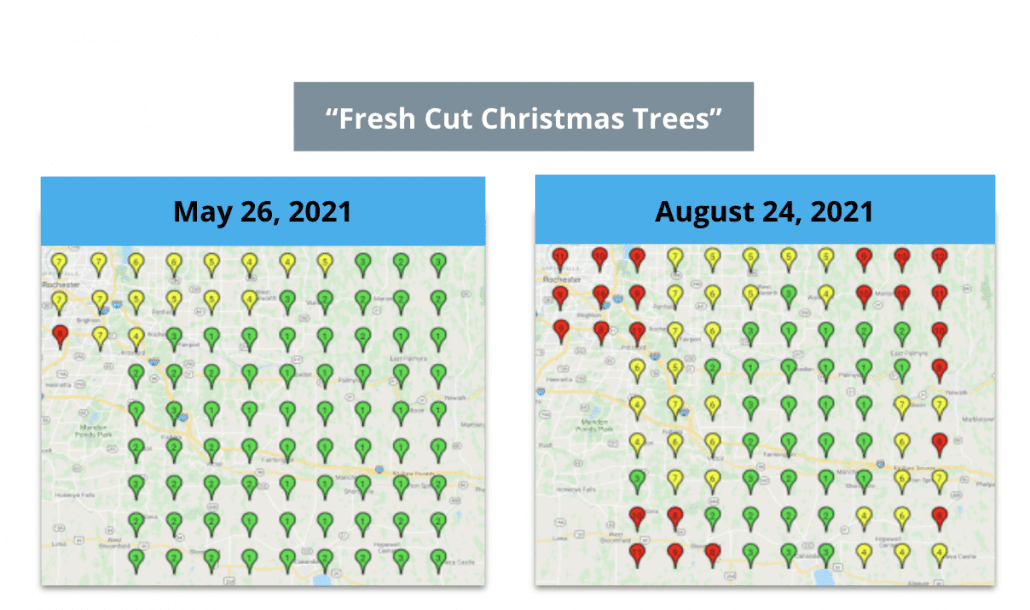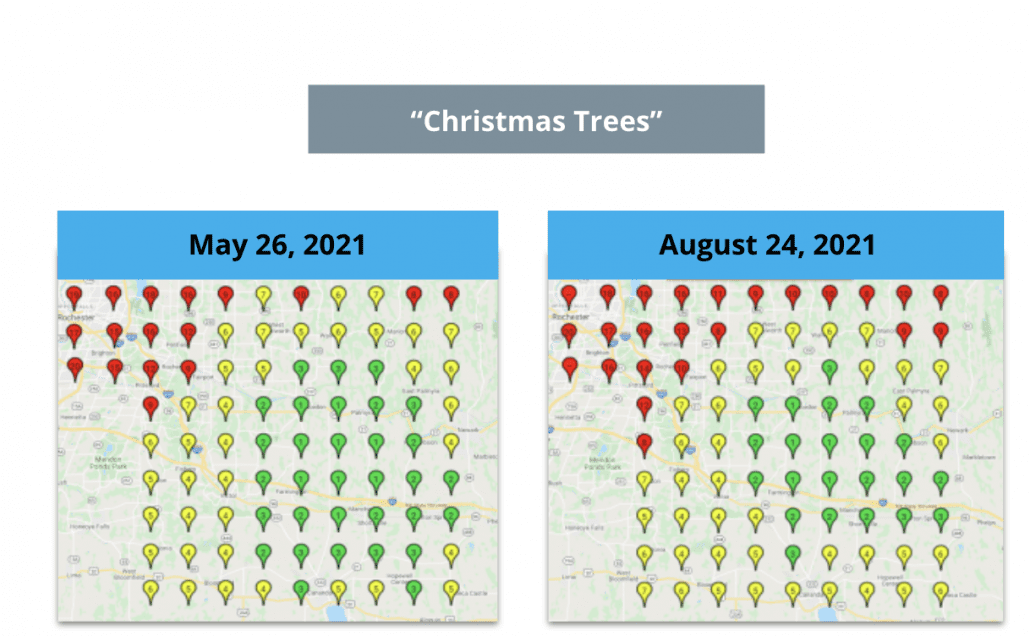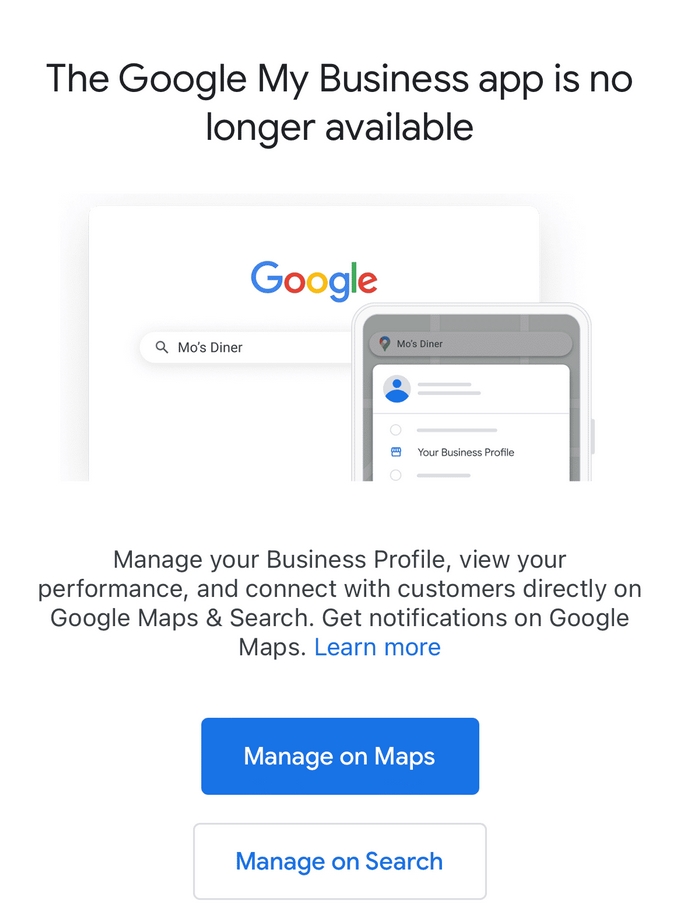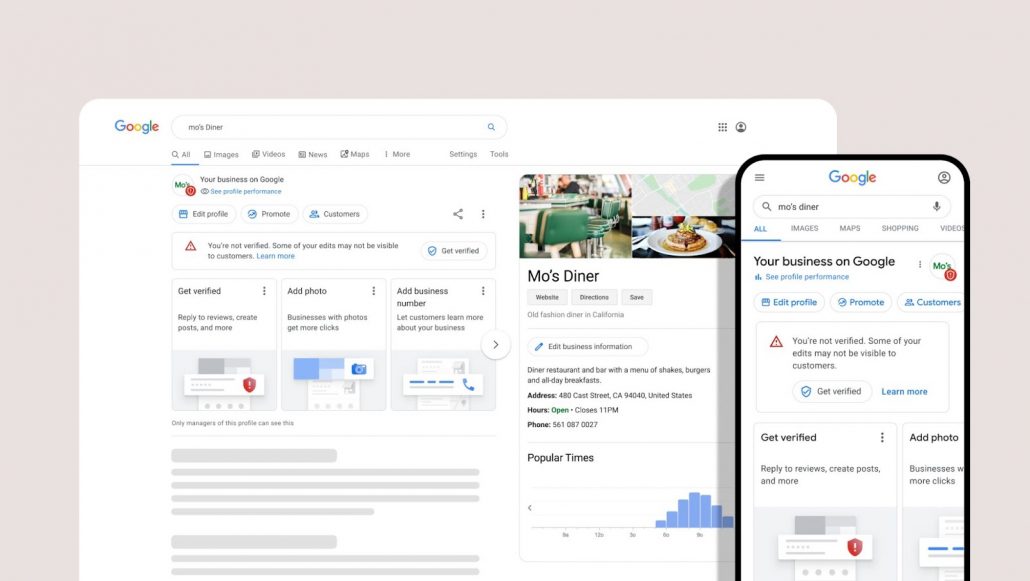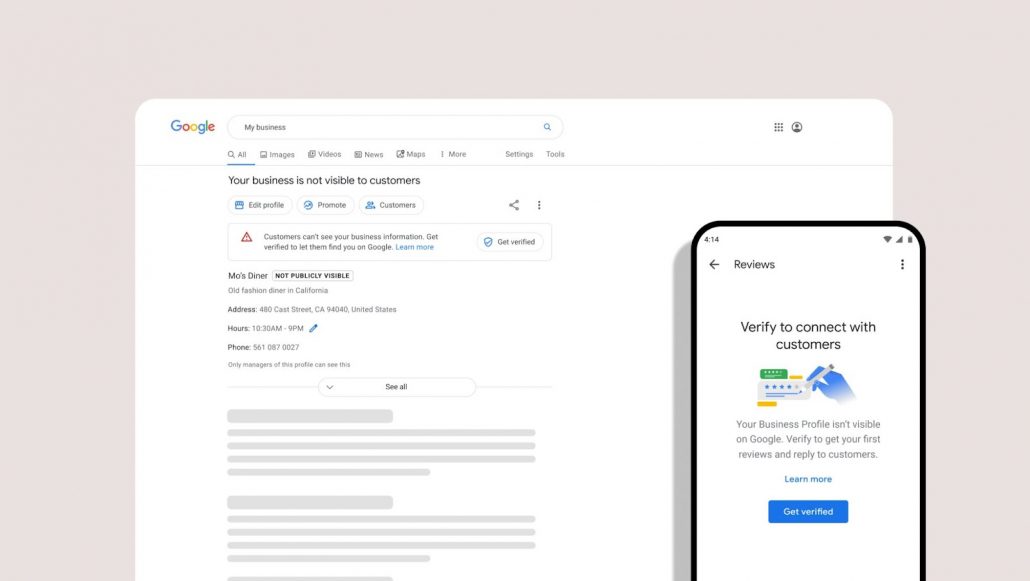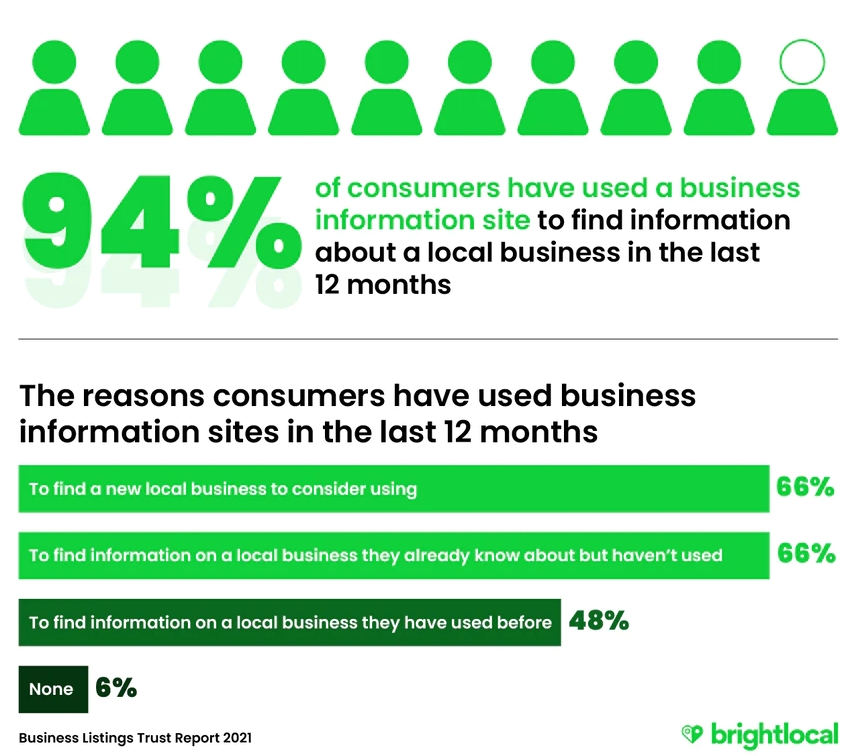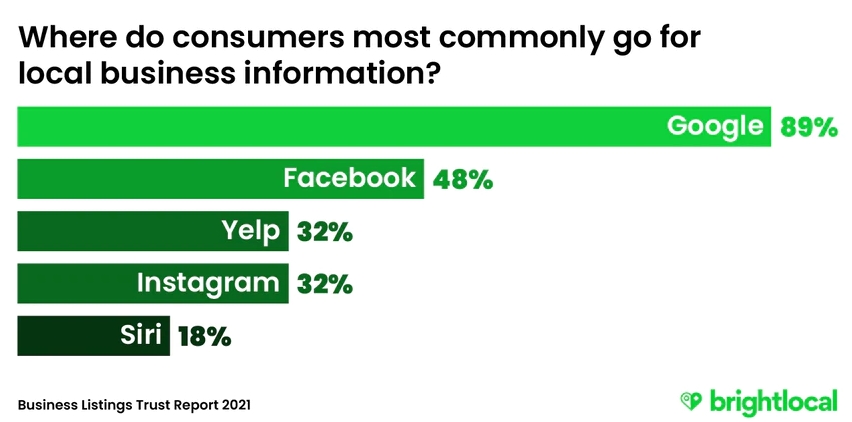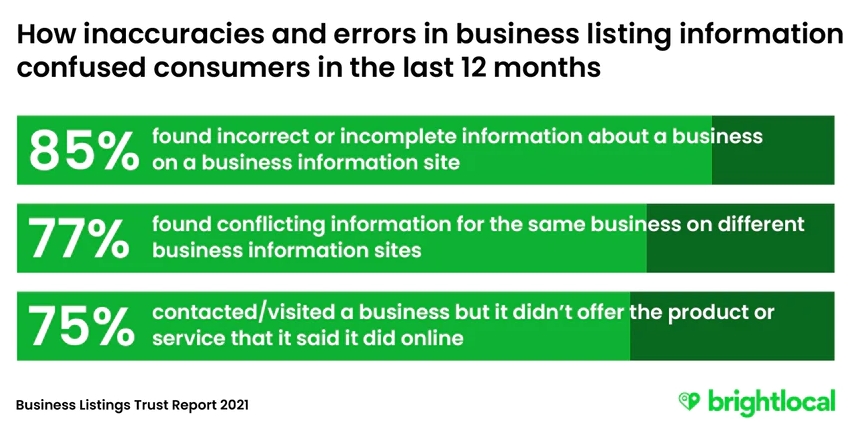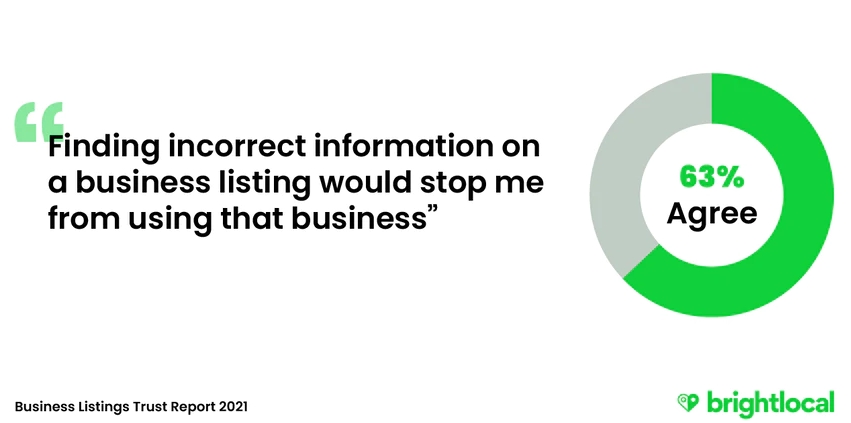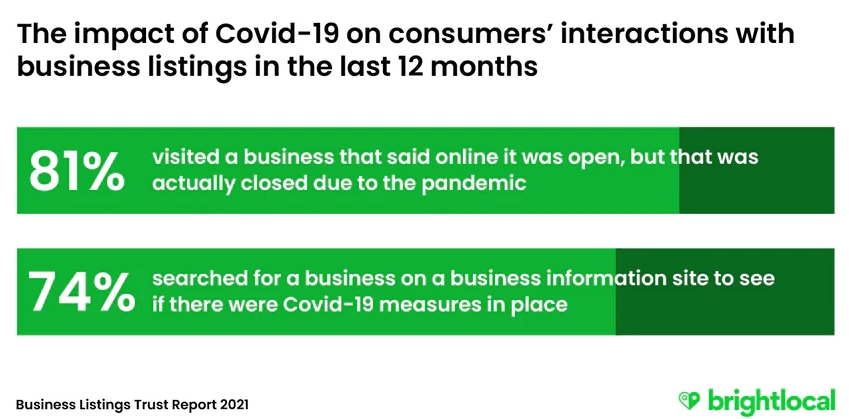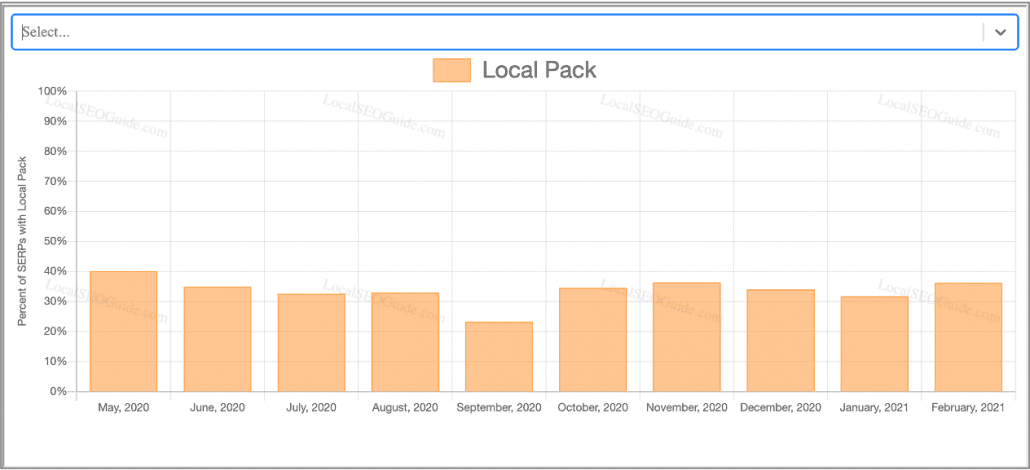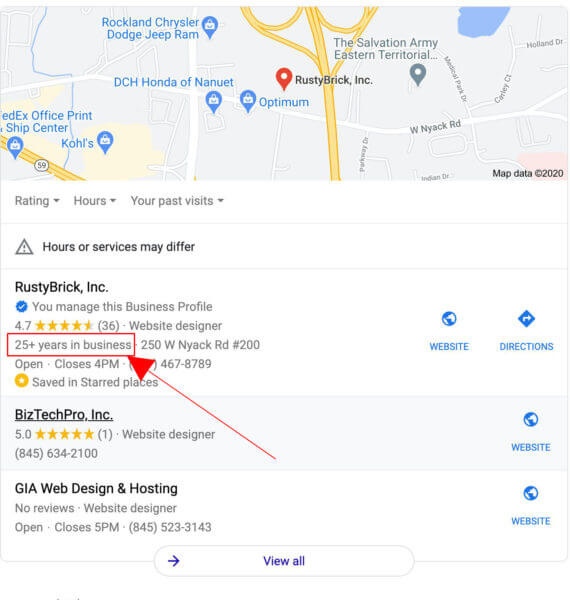It is well known that business listings on sites like Google My Business or Yelp are an important part of connecting modern consumers with local businesses in their time of need, but you might not realize just how essential they are.
A survey recently conducted by BrightLocal makes it perfectly clear, showing that 94% of consumers use business listings websites to find local businesses and more.
Below, I’ll be breaking down some of the most interesting findings from the study:
Why Do Consumers Use Business Listings?
After showing that nearly all consumers (94%) have used business information websites in the past year, the survey asked what the respondents had been hoping to achieve.
They found that most had multiple reasons for searching business listings, but most were driven to specifically connect with brands they’d never done business with before.
Specifically, the results showed that 66% of consumers used business information sites to find new businesses, while 66% found information on businesses they were already aware of but hadn’t used.
Meanwhile, less than half (48%) used local business listings to find information about businesses they had already used before.
Which Business Listing Platforms Do People Use?
Out of more than 20 options, the results showed that the vast majority of people used a small handful of sites to find information about local businesses.
Unsurprisingly, Google led with 89% of consumers using the service to find a local business at least once in the past 12 months.
For comparison, Facebook followed with 48% of respondents using the platform for local business information.
It should be noted that in many cases, a platform like Yahoo may be using another service’s search engine – such as the case with Bing. Though only 15% of users directly used Microsoft’s search engine to find local businesses, more than a quarter (28%) used platforms powered by Bing.
Additionally, the reason popular platforms like TripAdvisor or Waze don’t appear high on the list is likely that they focus on one niche, unlike Google or Facebook.
Wrong Information Is Rampant
It should be obvious that your listings need to be accurate for a number of reasons. Not only is important for potential customers to be able to actually find the businesses that offer the products or services they need, but local listings serve as powerful SEO signals as well.
This is why it is rather surprising that most consumers say they have encountered incorrect information in business listings in the past year.
According to the report, 85% of consumers found incorrect or incomplete information on a business listing in the last year, and 77% saw conflicting information on a business across different online directories.
Wrong Information Loses You Business
To make it clear how directly inaccurate information on your listings affects your business, 63% of consumers say that finding incorrect information on a business listing would stop them from using that business.
That is more than half of your potential new customers gone because your phone number, hours, address, or other basic information are wrong online.
How Covid Impacted Local Listings
It has to be noted that online local business listings have taken on a new level of importance over the past year because of the Covid-19 pandemic.
Quickly changing business practices, new safety measures, shifting hours, made it necessary for consumers to check online before going to any business – even ones they’ve been to dozens of times.
For example, 74% of consumers used local listings to see what Covid-19 safety measures brands had put in place.
Unfortunately, brands didn’t always keep up their side of the bargain by updating their listings as things changes. Based on this survey’s responses, 81% of consumers visited a business that said online it was open, but that was actually closed due to the pandemic.
As the study shows, you don’t need to have your business listed on every site out there. Instead, it is better to focus on keeping your information accurate on every directory your business is on – even if you are only on a handful of local business information sites.
For more information, including additional findings methodology, and further analysis, check out the full report from BrightLocal here.




